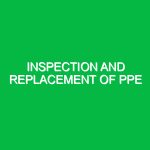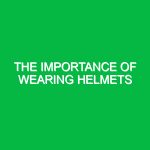Personal Protective Equipment (PPE) training and compliance serve as vital components in the Health, Safety, and Environment (HSE) domain. Understanding how to effectively utilize PPE not only safeguards individual workers but also cultivates a culture of safety within organizations. This article explores the importance of PPE training, the hazards associated with improper use, key safety precautions, and the regulatory framework guiding compliance.
Understanding PPE Training and Compliance
PPE training refers to the educational processes designed to equip workers with the knowledge and skills necessary to properly select, use, and maintain personal protective equipment. Compliance, on the other hand, ensures that organizations adhere to established safety regulations and standards. Together, they form an essential partnership aimed at minimizing workplace injuries and illnesses.
In recent years, organizations across various sectors, from construction to healthcare, have increasingly recognized the significance of robust PPE training programs. For instance, a notable case in the construction industry illustrated that a comprehensive PPE training initiative reduced injury rates by 42% over a year. This highlights how effective training can lead to substantial improvements in workplace safety.
Identifying Hazards and Risks Associated with PPE
Before delving into the training and compliance aspects, it is critical to identify the hazards that necessitate the use of PPE. Various risks can be present in different work environments, ranging from physical injuries to chemical exposures. Here are some common hazards:
1. Physical Hazards
These include risks from falling objects, sharp tools, and machinery. For example, construction sites often have workers operating heavy machinery and working at heights. Improper use of hard hats, safety gloves, or harnesses can result in severe injuries. A real-life incident involved a worker who fell from a height due to a faulty harness, which had not been correctly inspected or fitted. Such incidents underline the importance of proper training.
2. Chemical Hazards
Industries such as manufacturing and healthcare frequently expose workers to harmful chemicals. Inadequate PPE, such as gloves or respirators, can lead to skin burns or respiratory illnesses. For instance, a worker in a chemical plant suffered severe skin irritation after neglecting to wear appropriate gloves. Training must emphasize the importance of selecting the right PPE based on the specific chemicals being handled.
3. Biological Hazards
Workers in healthcare settings face exposure to viruses and bacteria. Proper training on the use of PPE, such as masks, goggles, and gowns, is essential for minimizing the risk of infections. During the COVID-19 pandemic, healthcare workers saw firsthand how critical it was to understand PPE use, as improper application led to significant outbreaks among staff and patients.
4. Ergonomic Hazards
While not always associated with traditional PPE, ergonomic hazards require protective measures to prevent musculoskeletal disorders. Training should include information on how to use supportive gear, such as back supports, correctly.
Best Practices for PPE Training and Safety Precautions
To mitigate the hazards mentioned above, organizations must implement best practices for PPE training and ensure compliance with safety protocols. Here are several actionable strategies:
1. Comprehensive Training Programs
Training should encompass the entire lifecycle of PPE, including selection, use, maintenance, and disposal. Interactive workshops can enhance learning experiences. One effective method includes scenario-based training where employees practice using PPE in simulated environments. This hands-on approach fosters confidence and competence.
2. Regular Assessments
Conducting regular assessments of PPE effectiveness and employee training is crucial. This can involve routine inspections and feedback sessions. For instance, a manufacturing company instituted monthly PPE audits, which identified gaps in training and led to immediate corrective actions, significantly improving safety compliance.
3. Clear Communication of PPE Policies
Establishing clear policies and procedures related to PPE use is vital. Employees should have easy access to these documents, which should include guidelines on when and how to use specific types of equipment. For example, a construction firm developed a pocket guide for workers detailing various PPE requirements for different tasks, enhancing adherence to safety protocols.
4. Involvement of Workers in Decision-Making
Engaging employees in the selection of PPE can lead to increased compliance and ownership. For example, a hospital allowed nurses to provide input on the types of masks to be used during certain procedures. This involvement not only improved compliance but also fostered a sense of responsibility among staff.
5. Continuous Improvement
Organizations should foster a culture of continuous improvement regarding PPE training and compliance. Regularly updating training materials to reflect the latest industry standards and practices is essential. This includes adapting to new technologies and changing regulations that may impact PPE selection and use.
Regulatory Framework Governing PPE Training and Compliance
Understanding the regulatory landscape is essential for effective PPE training and compliance. Several key regulations and standards govern workplace safety and PPE in various jurisdictions:
1. Occupational Safety and Health Administration (OSHA)
In the United States, OSHA sets forth regulations that mandate the provision and use of PPE in the workplace. OSHA‘s General Duty Clause requires employers to provide a safe workplace, which includes proper PPE training. Specific standards, such as 29 CFR 1910.132, outline requirements for PPE usage in general industry settings.
2. National Institute for Occupational Safety and Health (NIOSH)
NIOSH provides guidance on the selection and use of respiratory protection, emphasizing the importance of fit testing and training programs tailored to specific workplace needs. Their recommendations are based on thorough research and are widely accepted as best practices in the field.
3. European Union Regulations
In Europe, the Personal Protective Equipment Regulation (EU) 2016/425 outlines essential health and safety requirements for PPE. This regulation emphasizes the need for comprehensive training programs to ensure workers understand the limitations and correct usage of their equipment.
4. Industry-Specific Guidelines
Many industries have developed their own guidelines and best practices, tailored to their unique challenges. For instance, the American National Standards Institute (ANSI) provides standards for high-visibility safety apparel, while the American Society for Testing and Materials (ASTM) offers standards for the performance of various PPE types.
The Future of PPE Training and Compliance
As industries evolve and new technologies emerge, the landscape of PPE training and compliance will continue to change. Virtual reality (VR) and augmented reality (AR) are beginning to play roles in training programs, offering immersive experiences that allow workers to practice PPE usage in realistic scenarios without the associated risks. Companies that embrace these innovations will likely see improved training outcomes and enhanced worker safety.
Conclusion
PPE training and compliance are not merely regulatory obligations; they are essential for protecting the health and safety of workers across various industries. By understanding the hazards associated with improper PPE use, implementing best practices in training, and adhering to relevant regulations, organizations can foster a safer workplace culture. As the industry continues to innovate, staying informed and adaptable will be crucial in maintaining effective PPE training programs, ultimately safeguarding workers and enhancing overall safety outcomes.


